How ritual masks help African tribes solve their problems
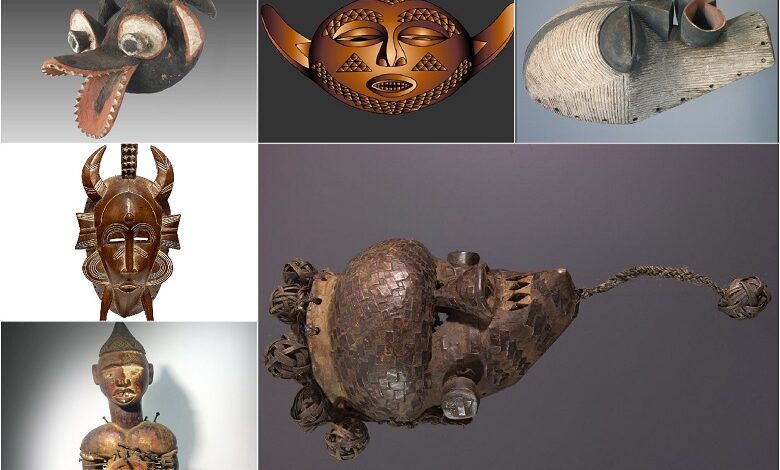
There are secret alliances in Africa. Secret – because the continent was colonized and the main religion here is now Catholicism.
Of course, ancient beliefs and cults remained, which, intertwined with Catholicism, often take bizarre forms. Africans carry out mysterious rituals that unite them with the world of spirits, using unique mystical accessories.
Punu and Baluba
The Punu tribe is a mixture of religions. Some of them live according to the beliefs of the ancients, some according to the official religion. Punu masks are very unusual in appearance – their features resemble Asian ones: a whitewashed face, a small nose, red lips. People of this appearance somehow ended up on the Black Continent, and now this is considered a kind of ideal of beauty: Punu women smear their faces with white clay to be beautiful.
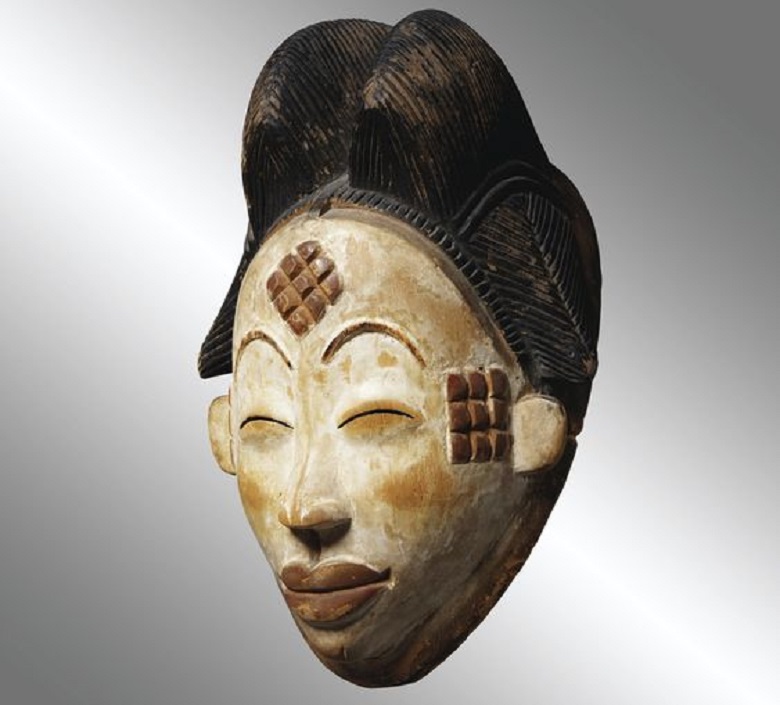
These masks wore during secret burial rites. White in Africa is the shade of death, the color of perfume. Africans believe that life after death exists, so they paint funeral masks to sign that they are now dealing with something extraneous, beyond. Interestingly, the burial ceremony takes place on stilts. An important aspect is the scarring on the mask’s forehead – women themselves did it for themselves.
Suppose a woman’s funeral mask has a high hairstyle. In that case, it means that she was very revered in the village, did not engage in heavy physical labor, and did not wear anything on her head, as is customary among African women.
Masks also wore in the Baluba tribe, where the secret society Bambudye exists. A distinctive feature of these masks is their rounded shape. Previously, the shamans of this tribe used a pumpkin to see the future. They cut the fruit in half, took out all the contents, and put stones and beads there, so the mask remained this shape – these are echoes of the past. Similar acts use in fertility rites during the opening and closing of the harvest season. Any of them are part of the suit and do not “function” alone.
Women highly valued Baluba. They believed that only women could keep secrets and can make alliances – before, only the wives of the leaders went to other villages to conclude essential agreements. They often base on marriages.
The figurines of women Baluba characterize by a sitting posture on bent legs. She has enormous breasts, which indicates that she has nurtured many children. Such products are the canon of beauty for a Baluba. They believe that a woman is beautiful if she has raised large offspring. There is deep scarring on the belly of the figurine – a sign of a new pregnancy or evidence of a ritual that performs for her to give birth to a strong son.

The Baluba has some signs of matriarchy, although most of Africa still has patriarchal features: a man is at the head, and a woman is engaged in gathering and building a house.
Pende, Mambila and Senufo
The Pende tribe is divided into two ethnic groups: Kwilu and Kasai. The Kwilu has a mask that represents the spirit of the ancestor. It is worn over the entire head and also wore at initiation and burial rites. With a beard, this mask indicates the way to the ancestors – during the dance, it, put on the dancer, helps the deceased find the way to them.
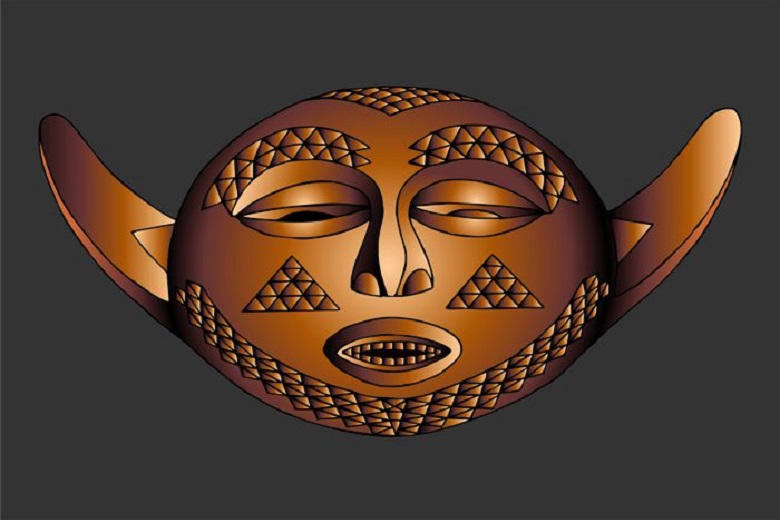
Ancestor cult is characteristic of Africa – they have no deities. Everyone worships them, believes that they should be honored. If someone got sick or something happened, it means that he offended his ancestors.
Some Pende masks are unusual even in Africa. For example, in a Mbangu mask, someone sees an image of paralysis or skin diseases. This is a mask associated with skin diseases. The Pende believe that if you get sick with something, you are to blame. No one will help you, you have to become a hermit, and you will either recover or not.
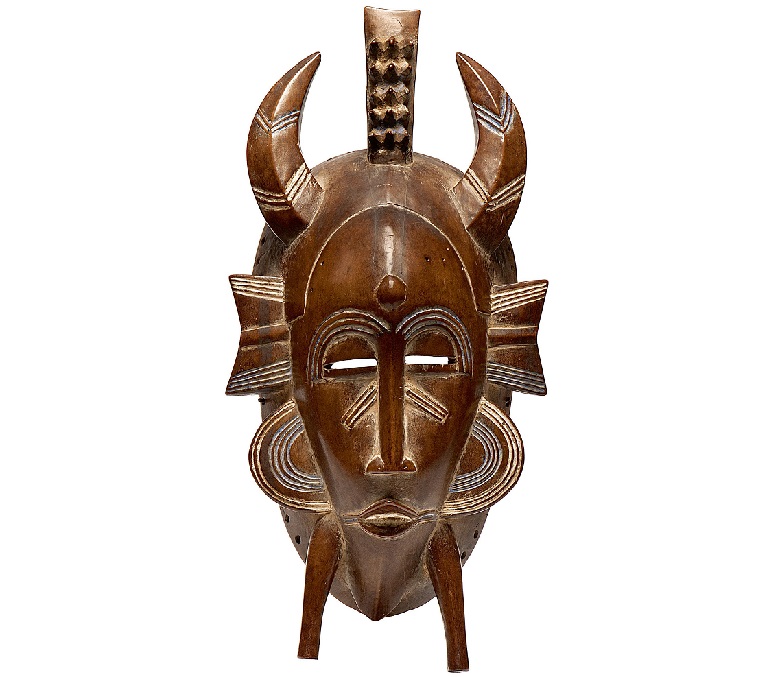
The shaman, however, can offer a variant of an ancient healing ritual. A mask is cut out for the sick person, after which the ceremony is performed. Therefore, it looks exactly like this – it is a kind of struggle with evil, a battle between spirits and the world in which a person is now.
There were indeed cases of healing – no one canceled the placebo effect. During the ritual of Pende, people hold a spoon in their hands, with the help of which they make noise as if causing a resonant wave (like shamans with a tambourine), trying to connect even more tightly with the world of spirits.
The Mambila tribe has a Suaga mask. It should be said that Mambila pays excellent attention to their food since almost all animals, including dogs, were raised in this tribe exclusively for food use. Almost everyone ate Mambila, and even in modern sources, you can read about their cannibal past. The Suaga mask is a demon that protects the village, expels other monsters, and since the tribe is sensitive to food, the show is associated with a fertility rite. Different masks, less aggressive, accompany her.

The secret male society of the Poro tribe of the Senufo is considered very strong to this day – this is a society of warriors. Its members keep a constant connection with the world of their ancestors, and only they can deal with the healing of diseases.
By what locate on the head of the mask, you can understand what a person is doing. If, say, this is a comb, then he is a farmer, if an animal is a hunter, if a person is a merchant. There is scarification on the forehead of the mask, and in the lower part, there are legs, showing the connection of the deceased (this is also a funeral mask) with the world of the living.
Songye and Salampasu
The Songye tribe had a secret society, the Kifwebe, which was very large and robust. The masks of this society could only obtain by passing a series of tests. The people who wore them acted as police officers. They were present at all ceremonies and kept order. Often, members of the society opposed the power of the leader and inspired awe even in neighboring villages. The Kifwebe also performed penitentiary functions: if someone was guilty, they came to him and punished him as they saw fit – expelled, scarred, tested.
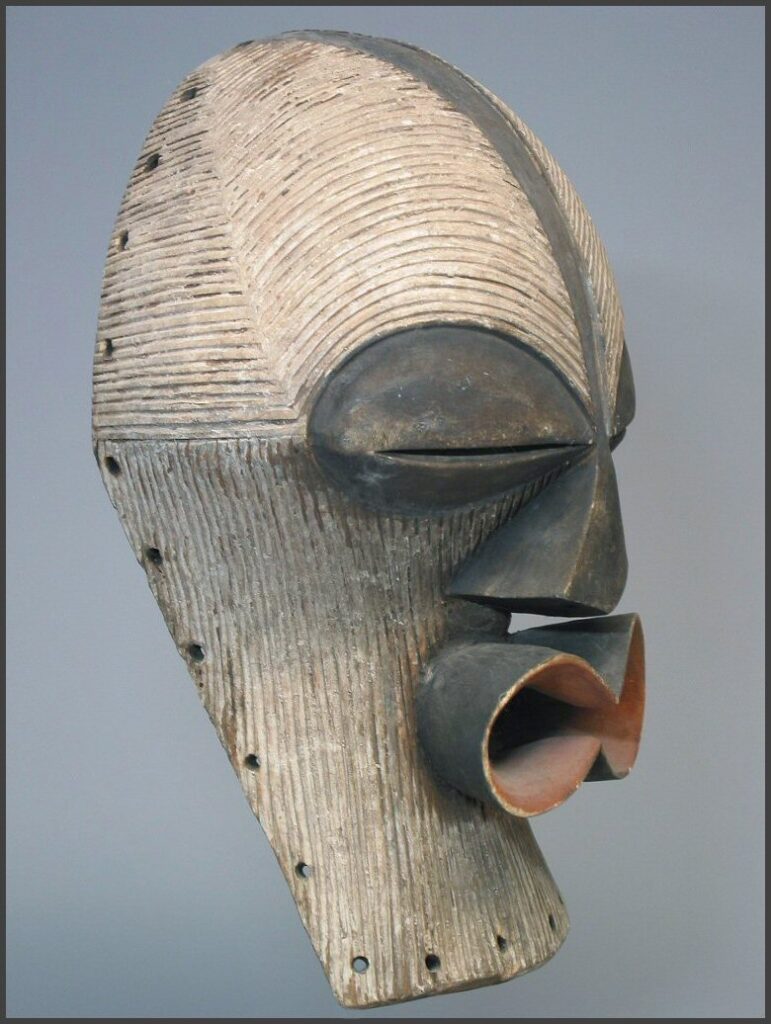
The chief’s son could only wear the Chihongo mask. In it, he walked through the villages and collected tribute, promising to protect the settlement from evil spirits. In modern times, this mask also uses, but more in the framework of dramatic action – people also walk in them through the villages, play performances, and collect money. The Chihongo of the Chokwe people has a distinctive mark on their foreheads that resembles a swastika.
Salampasu is a tribe of warriors and hunters; there is a robust masculine principle in their masks. From an early age, the boys of this tribe teach the art of war; they did not live with their parents from the age of eight – they went into a secret society.
To get the highest mask of the Salampasu – Mukinka – you must first contact the hunter’s mask, then the warrior, and, finally, the mask of the ruler. It turns out that the ruler is both a hunter and a warrior and a wise person. Sawed teeth, aggressive facial features indicate that the bearers of such masks underwent initiation rites.
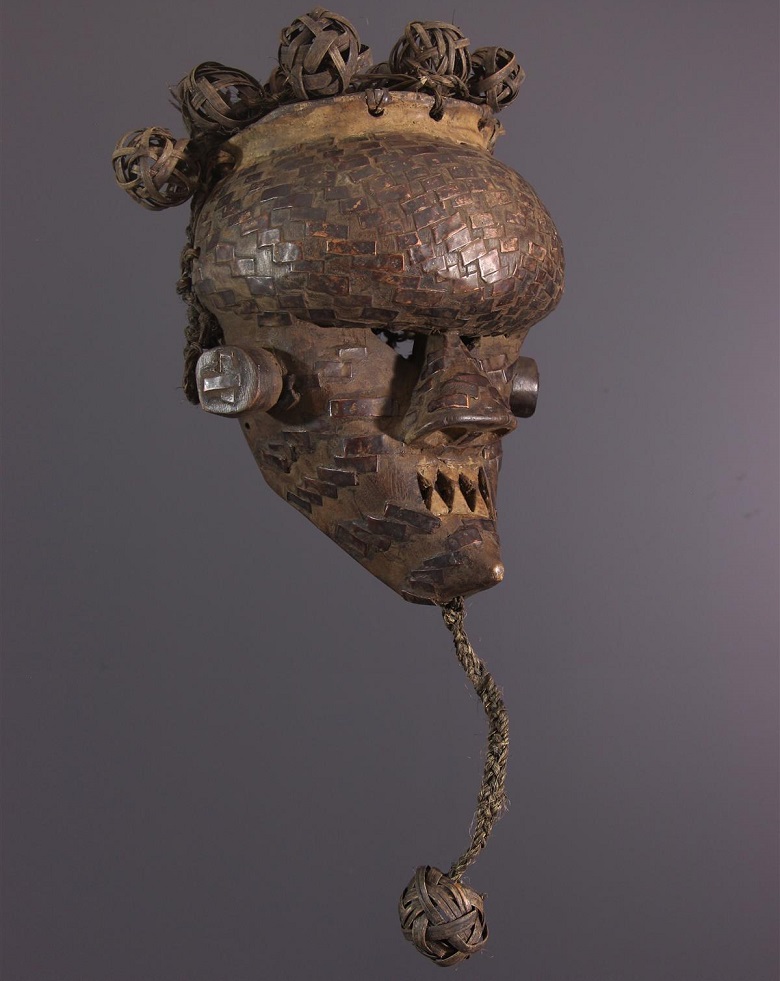
For young people, this is primarily the circumcision of the foreskin and file teeth. The latter does not only for boys but also for girls to prove the strength and connect with a totem animal – a crocodile, and make it convenient to eat meat. During these rituals, one could neither cry nor scream, as this meant the failure of the test.
Nkisi figurine

A Nkisi Konde figurine may seem like a voodoo doll – it is studded with nails. Konde expresses an aggressive start. Such figures are ubiquitous; they perform various functions: protection of the home, revenge, and fulfillment of desires. To make a detailed product, it is necessary to contact the sorcerer Manga and formulate why it is needed. Only then does he begins working on the figure. It is important to note that the sorcerer is not only a shaman but also a woodcarver.
After he has done this, work begins with the figure. The sorcerer blows life into it, and if his strength is not enough, he takes the product to the cemetery – so that there it is saturated with the power of the ancestors. When the figurine hand over to the customer, there are no nails in it. By hammering in a nail, the client, as it were, activates the product, awakens it. Therefore, by the number of pins, you can find out how often the Nkisi was contacted (by the way, before driving in a nail, it must lick).
As a rule, the figurine is placed in front of the house and buried in the ground to be in constant contact with the spirit world. Often, Nkisi is with a tab in the stomach – earth and herbs from their ancestors’ grave. To increase strength, they try to decorate the figurine with balls into which pebbles and beads embed.




